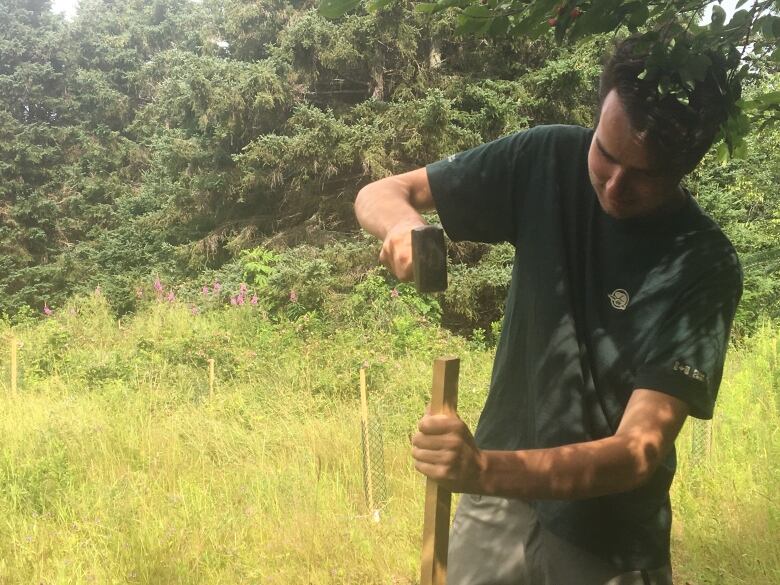Parks Canada working to restore forest on P.E.I.'s Robinsons Island
3,000 trees planted on the Island since May

Parks Canada is wrapping up work to help restore the forest on P.E.I.'s Robinsons Island.
Since the beginning of May, 3,000 trees have been planted on the Island.
The goal is to help restore the forest in P.E.I. National Park to its natural state by planting trees such assugar maple, yellow birch, white pine and red spruce.
"To have a forest structure that has different ages and different vegetation types is the way to go with a healthy forest," said Hailey Lambe, a resource management officer with Parks Canada.
In the past, P.E.I. National Park was used for farming and camping sites. Now, Parks Canada is trying to restore the population of species of the Acadian forestthat wereonce there.

"What it resulted in is a forest type that is kind of unrepresentative of the Acadian forest, so we're lacking some of those key species in those areas, so we're just trying to implement them," Lambe said.
The crew of current and former students from the University of Prince Edward Islandand Holland College has been hard at work to make it all happen. Sometimes they planted upwards of1.100 treesin one day.
She saidthe work will be worth it when she sees the small seedlings grow into towering trees.
"To be able to come back in 50 or 60 years and see it will be really great and to kind of feel more satisfied," she said.
For the next few months, the crew of eight will walk through the grounds to inspect the guards around the saplings to make sure they haven't been damaged.












_(720p).jpg)


 OFFICIAL HD MUSIC VIDEO.jpg)
.jpg)



























































































